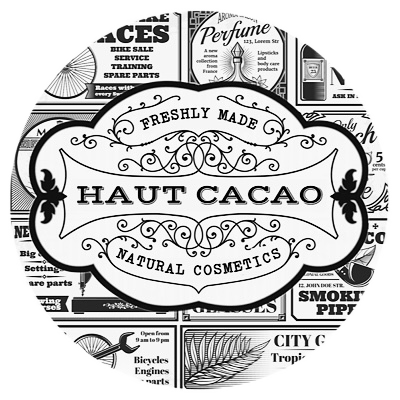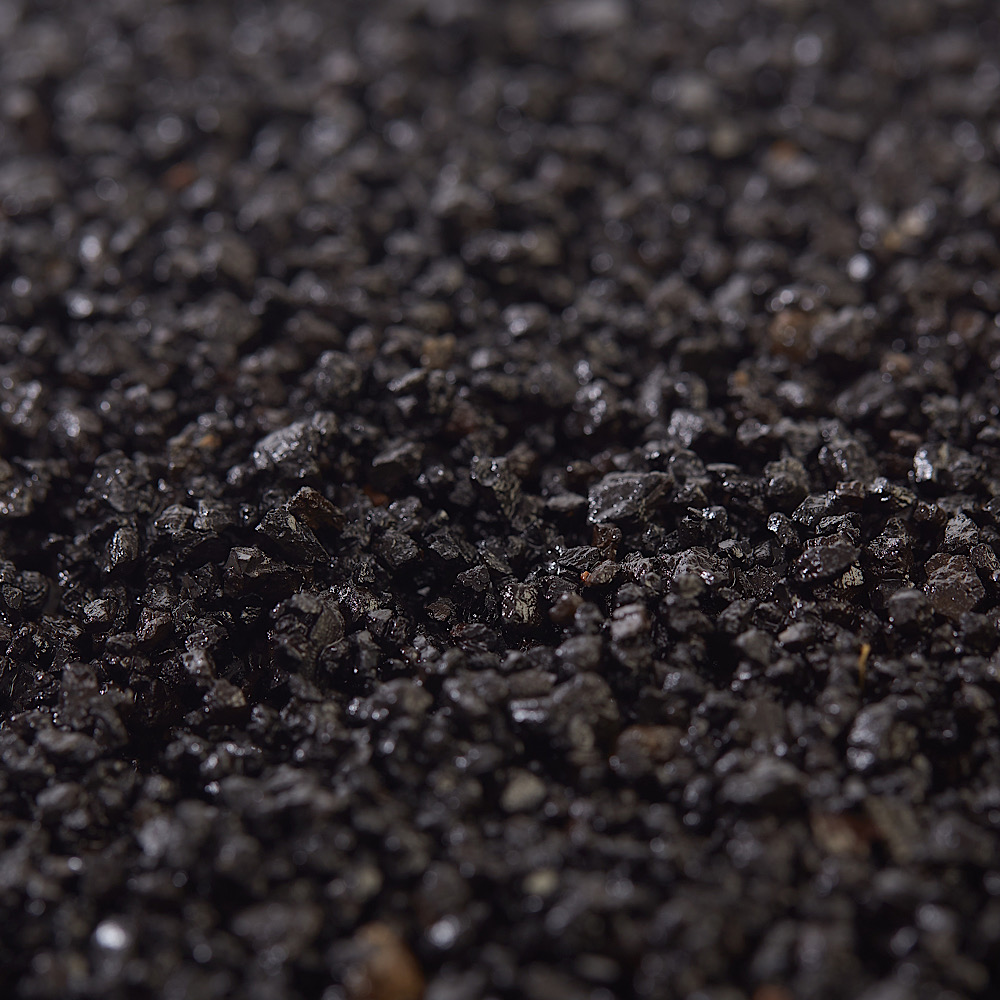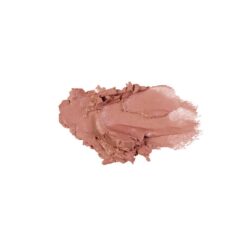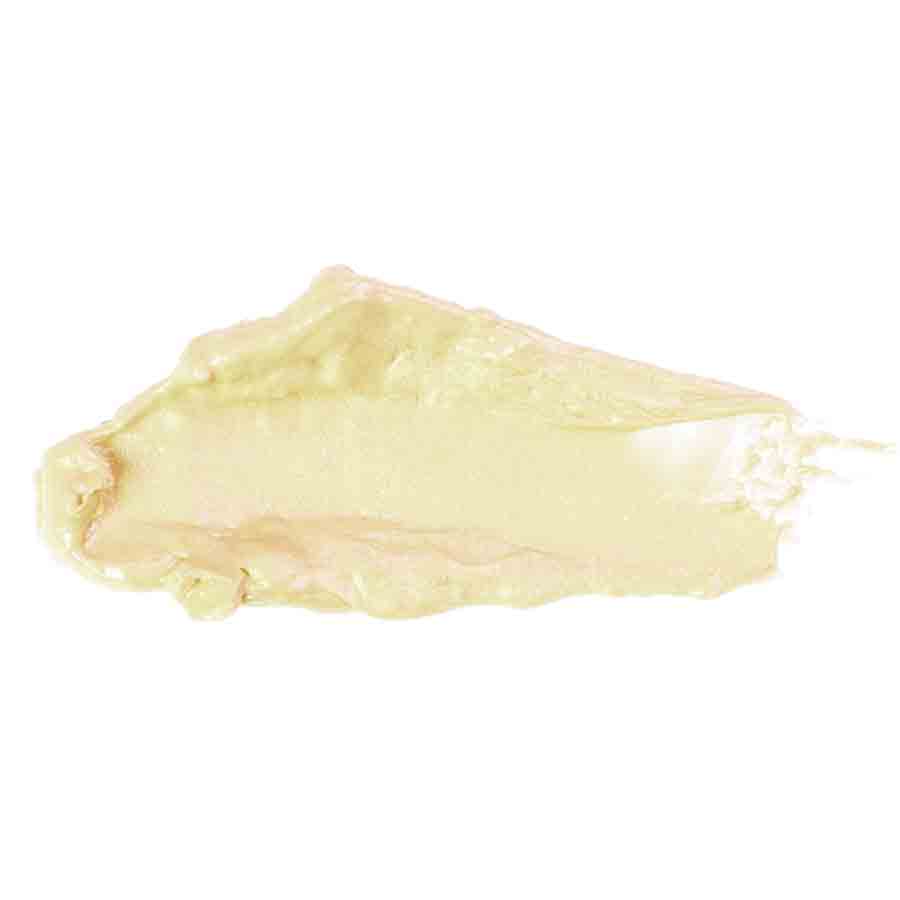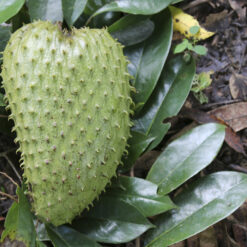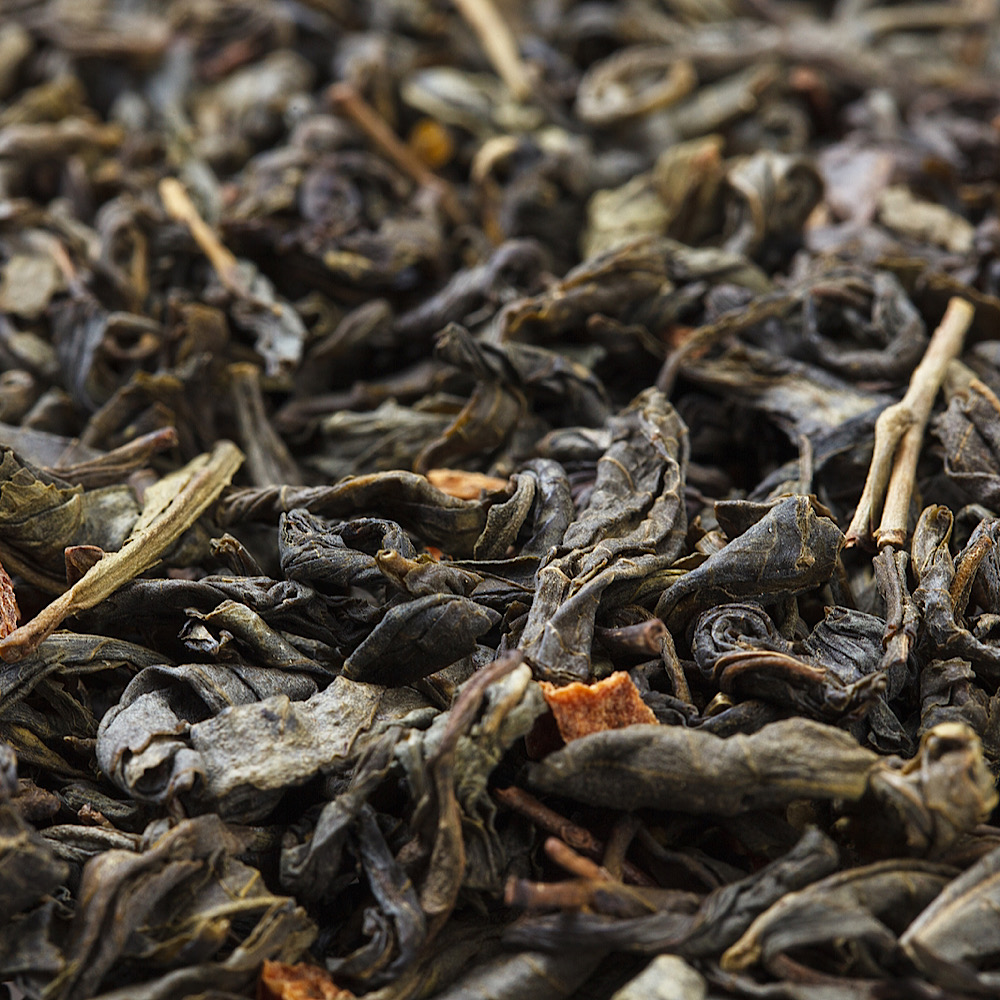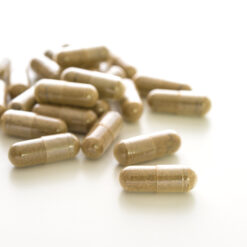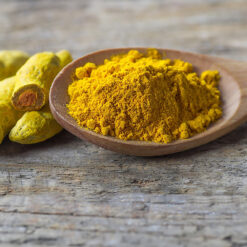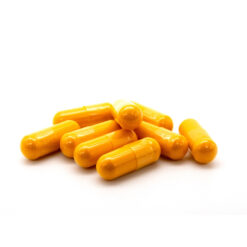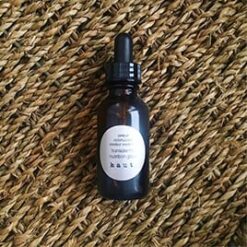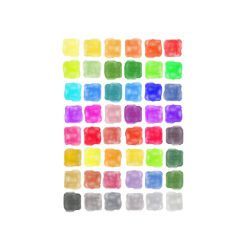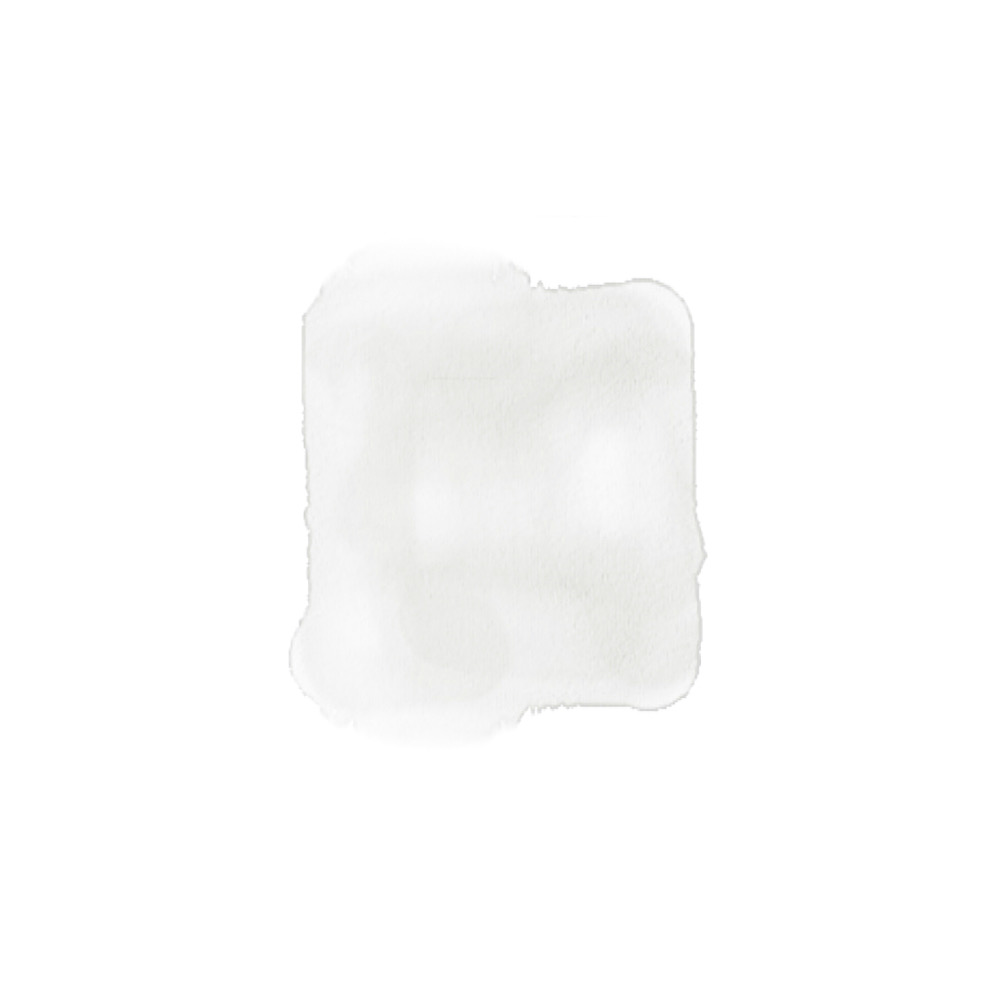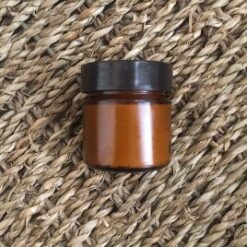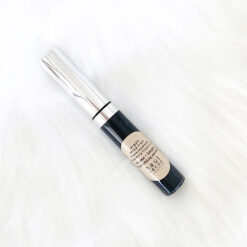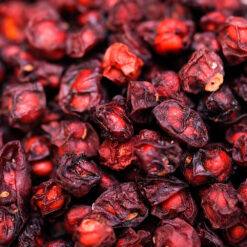more on fulvic + humic substances
ABOUT HUMIC FULVIC SUBSTANCES
Fulvic acids defined Fulvic ~word origin: [ful < Old English < full] full of, characterized by, having the qualities of, having the ability or tendency to, apt to alteration, to bend, to change. Also [fulvus <Latin>] deep yellow, reddish yellow, golden, or tawny color. ~definition: Fulvic is an extremely complex bioactive yellow organic substance, the ultimate aerobic decomposition product of all living matter, with unusual and exceptional qualities and abilities to change, alter, molecularly combine with, or act upon virtually all other organic and inorganic matter. Having the characteristics of fusion at the molecular level.
Fulvic acid ~description: An extremely bioactive low molecular weight yellow substance that is the end product of decomposition of all once living matter, which is readily water soluble and soluble in both acid and base, and at all pH levels. Consists of extremely complex molecules made up of microbial exudates and highly protective and seemingly immortal plant phytochemicals which are combined and recombined during the humification (decomposition) process, requiring digestion by at least three different species and successive generations of appropriate species of microbes, ultimately becoming the most complex natural substance on Earth. Also contains latent solar energy hidden deep within its complex molecular structure which originated from photosynthesis of the plants of origin, which is partly responsible for the most unusual properties and bioacative nature of fulvic acids. More correctly called Fulvic acids (plural), because Fulvic acid is not a single consistent substance, but is a highly varied and complex substance reflecting the nature of the plant and animal species of origin, and also the nature of the specific species of microbes responsible for its creation during the humification process.Fulvic acids: What are they? Where do they come from? What can they do? Why do we need them?
Though virtually unknown to the layman, there is perhaps no substance more vital to life, (with the possible exception of oxygen and water) than the biologically derived compounds known as Humic and Fulvic acids. Fulvic acids enter into all life processes within plants and animals and wear many hats. When necessary; they act as free-radical scavengers, supply vital electrolytes, enhance and transport nutrients, make water wetter, catalyze enzyme reactions, increase assimilation, stimulate metabolism, chelate essential major and trace elements making them organic, and demonstrate amazing capacity for electrochemical balance.Unknown Fulvic
Despite the fact that scientists world wide have published thousands of papers relative to fulvic acids and their effect on living matter, they have received limited public exposure because of the inability to produce and commercialize these substances. Researchers consider water extracts of 30 parts per million (ppm) as being a high concentration. For obvious reasons the knowledge of fulvic acids have been confined primarily to the scientific community.3
How Are They Formed?Fulvic acid is a derivative of microbial degradation of humic substances. Microorganisms are essential to the process. Each gram of healthy top soil has in excess of four billion microorganisms that participate in manufacturing bio-chemicals essential to healthy plants and animals. If they were to fail our lives would cease. A better perspective of their importance can be gained by looking at the work they do. Microorganism activity in preparing one acre of top soil, expends the equivalent energy of 10,000 people doing the same amount of work in the same amount of time.
What Humic Substances Do in the SoilScientists claim organic substances stimulate plant cellular growth and division, including auxin type reactions. They enhance plant circulatory systems and promote optimum plant respiration and transportation systems. They decrease plant stress and premature deterioration. They dramatically improve seed germination and promote greater fibrous root growth. They increase the size and numbers of legume root nodules and increase resistance to drought and insect infestation.
High molecular weight humic substances serve as food stock for microorganisms, which in turn break them down into smaller units of high energy substances called fulvic acid. Humic substances of high molecular weight, including humic acids, alter the physical characteristics of the soil while low molecular weight fulvic acids are involved in biochemical reactions that influence the plant’s metabolic process. Both are indispensable.The Fulvic Miracle
In addition to duplicating many of the positive functions of humic acid, fulvic acid will: Stimulate metabolism Give positive effect on RNA & DNA Act as a catalyst in respiration Increase metabolism of proteins Increase activity of multiple enzymes Enhances the permeability of cell membranes Enhance cell division and cell elongation Aid chlorophyll synthesis Increase drought tolerance, and prevent wilting Increase crop yields Assist denitrification by microbes Buffer soil pH Contribute electrochemical balance as a donor or an acceptor Synthesize new minerals Chemically weather inorganic substances Decompose silica to release essential mineral nutrients Detoxify various pollutants (pesticides, herbicides, etc.)
4The two major life functions which cannot be duplicated by man are Photosynthesis and Humification
Who and What are you?Biologically you consist of varying amounts of the following major and minor elements;
Calcium Carbon Chlorine Hydrogen Iron Iodine Magnesium Sulfur Oxygen Phosphorus Potassium plus traces of aluminum, bromine, cobalt, copper, fluorine, manganese, nickel, silicon, sodium, zinc, and all the additional (as yet) undiscovered trace elements being added to the list as our knowledge increases.The Body Cellular
The elements you are composed of (plus or minus a few billion) are components of approximately 60 trillion cells. An average cell contains about 1 quadrillion molecules, which is about 10,000 times as many molecules as the Milky Way has stars. Individual cells when properly nourished, are capable of producing many of their own amino acids, enzymes, and other factors necessary for all metabolic processes. Each cell, in addition to other processes, burns its own energy, maintains itself, manufactures its own enzymes, creates its own proteins, and duplicates itself. It is essential to understand that the total5
metabolism of the body is the sum of the metabolic operations carried on in each individual cell.Growth & Maintenance Nutrients
Scientist have identified at least 90 growth and maintenance nutrients which must be continuously supplied to the body to sustain healthful life. These growth and maintenance nutrients include amino acids, major and trace minerals, vitamins and other nutritional factors. When these factors are supplied to our cells, the cells then create the building blocks for the total metabolic machinery of our life process. The building blocks present in the metabolic machinery of human beings are (in the great majority of cases) the same as the building blocks contained in the metabolic machinery of other organisms of extremely different types.Organisms vary in their capacity to produce some of these building blocks internally. Some organisms are capable of producing all amino acids within their cells. Humans can produce all but eight. Some organisms can produce many of the vitamins within their cells. We can only produce one. The very complex processes of all metabolic functions are carried on within the cell. If we fail to supply the cell with the essential growth and maintenance nutrients we will experience a breakdown of these functions. When this breakdown is substantial we have the onset of disease or the manifestation of some related defect.
Nutritional DeficienciesTotal deficiencies in one or more of the growth and maintenance nutrients which human cells need for healthful metabolism is now a rare occurrence, but substantial deficiencies in the growth and maintenance nutrients is a common factor to every degenerative disease we experience.
Sick Soils, Sick Plants, Sick PeopleAll naturally fertile soils contain adequate amounts of humic and fulvic acids produced by resident microbes within the soil. Humic and fulvic acids assist the plant in obtaining its complete nutrition. Our modern agriculture aims (with few exceptions) at one goal which is market. Food quality is sacrificed for food quantity. Since the farmer is paid by the bushel, yield is paramount to nutritional content. The farmer in his frantic effort for yield, has succumbed to the Pied Pipers of agro-chemical companies with products to sell. He is further decoyed by bad advice from county agents and higher schools of learning that protect the “grant” status of moneys received from these same agro-chemical companies, who advocate the application of excessive amount of nitrate fertilizers to the soil. Such practices stun and destroy the indigenous microbial life within the soil. When microbial life is inhibited or destroyed, vital humic and fulvic acids are exhausted.
Gone Are The Minerals6
When microbes are depleted from the soils, they are no longer present to convert inorganic minerals into organic minerals needed by plants. Excessive use of nitrate fertilizers inhibits the formation of normal plant proteins and stimulates an over-abundance of unused amino acids that attracts insects. Since pests were created to eat diseased plants this introduces the ideal environment for increased infestation because of increased insect food supply. The farmerís reaction is more pesticides and fungicides to save his infested crop. This in turn inhibits or destroys even more vital microorganisms that are essential to mineral conversions to plant nutrients.Unsafe Foods
These deficient, pesticide laden products are turned into “cash” which the farmer thinks is the bottom line. Lacking in organic trace elements and other nutritional factors, but long on chemical residues from pesticides, insecticides, herbicides, these nutritionally hollow products end up on the tables of America. Without taste, and deficient in organic minerals and nutrients, we peel, boil and overcook what remains and ask “why do I hurt?”Can Good Foods Be found?
A very small percentage of the agricultural lands of America are fertile enough to produce nutritious and healthy foods. An honest effort in attempting to select a healthful diet from grocery shelves may be a nutritional disaster. Unless you are fortunate enough to organically grow your own foods, supplementation is a necessity.The Vitamin Connection
In this century common vitamin deficiency diseases have been reduced dramatically due to our awareness of the role of vitamins in nutrition. New breakthroughs are just beginning to emerge in the use of increased dosages for treatment of some ailments. It should be noted however that vitamins cannot complete their function in the cell’s metabolism without the presence of certain minerals. This may explain the fascinating effects of humic and fulvic acids at work in living organisms. Fulvic acid chelates and binds scores of minerals into a bio-available form use by cells as needed. These trace minerals serve as catalysts to vitamins within the cell. Additionally, fulvic acid is on to the most efficient transporters of vitamins into the cell.The Enzyme Connection
An enzyme is a catalyst that does not enter into a reaction but speeds up or causes a reaction to take place. Enzymes are complex proteins. The burning of glucose in cells for instance, requires the action of several enzymes, each working on the substrate of the previous reaction. Each cell of the body (when properly nourished) is capable of producing the enzymes needed for complete metabolism. Research has shown that fulvic acid improves enzymatic reactions in cells and produces maximum stimulation of enzyme development. The fulvic acid molecule often contains within its structure coenzymes and7
important factors which the cells may utilize in stimulation the manufacturing of enzyme reactions and formation. Leading scientists, such as Roger J. Williams, recognize that:”the building blocks present in the metabolic machinery of human beings are, in the great majority of cases, exactly the same as the building blocks contained in the metabolic machinery of other organism of extremely different types.”
Fulvic acid will in all probability, be found to be one of the key factors of enzyme reactions with all living cells.Free Radicals & Antioxidants
Free radicals are highly reactive molecules or fragments of molecules that contain one or more unpaired electrons. They circulate through the body causing great mischief in bonding to and injuring the tissues. In addition to destroying tissue, they magnify the probability that injured cells will become susceptible to a great many infections and diseases, or mutate and cause cancer.Free Radical Scavengers
Most free radicals are oxygen radicals. Our first line of defense against free radicals is a generous supply of free radical scavengers called antioxidants. Dramatic increases of free radicals in our air, food and water in recent years have put a tremendous strain on the body’s natural defense mechanisms. When we exceed our capacity to resist, cell membranes and tissues are exposed to the devastating onslaught of free radicals which combine with the lipid portion of cell membranes to greatly lower their resistance to carcinogenic pathogens.Super Antioxidants
In recent years frantic efforts have been make to locate and isolate compounds with extraordinary affinity for free radicals. Entire industries have evolved around such efforts, with nearly every vendor of health food products offering suitable solutions. Because of the limited public knowledge concerning the great contribution fulvic acid plays as a bi- directional super antioxidant, we need to consider certain facts.Fulvic Acid and the Free Radical Connection
To gain knowledge of how antioxidants tie up free radicals we must understand their workings, and explode a general misconception. For antioxidant to bind a free radical the antioxidant molecule must have unpaired electrons of equal and opposite charge to that of the unpaired electrons of the free radical. In a sense the free radical scavenger is its self a free radical or it could not mate and neutralize the destructive effects of free radicals.8
Who Wears the White Hat?We have found that fulvic acid is a powerful, natural electrolyte that can act as an acceptor or as a donor in the creation of electrochemical balance. If it encounters free radicals with unpaired positive electrons it supplies an equal and opposite negative charge to neutralize the bad effects of the free radicals. Likewise, if the free radicals carry a negative charge, the fulvic acid molecule can supply positive unpaired electrons to nullify that charge.
Antioxidants and BeyondBeing a bio-available chelated molecule that can “also” chelate, fulvic acid wears the white hat. As a refiner and transporter of organic minerals and other cell nutrients, it has the ability to turn bad guys into good guys by chelating and humanizing free radicals. Depending upon the chemical makeup of the free radical, they can be incorporated into and become a part of life sustaining bio-available nutrients. They may become an asset instead of a liability. In the event that the chemical makeup of the free radical is of no particular benefit, it is chelated, mobilized, and carried out of the body as a waste product.
The Human ExperienceAlthough being made prior to the discovery and naming of fulvic acid, the late Dr. Clyde Sandgrin publicly stated:
“If I had to chose between the liquid mineral and electricity, electricity would have to go.” Reported benefits are little short of astonishing. For internal use they are: Increased energy Alleviates anemia Chelates body toxins Reduces high blood pressure Potentates vitamin & mineral supplements Magnifies the effect of herbal teas and tinctures Chelates all monovalent and divalent metals Is a powerful natural electrolyte Restores electrochemical balance Stimulates body enzyme systems
9 Helps rebuild the immune system Reported external beneficial use in: Treating open wounds Healing burns with minimum pain or scarring Eliminating discoloration due to skin bruises Killing pathogens responsible for athletes foot Acting as a wide spectrum anti-microbial and fungicide Treating rashes and skin irritations Helping to heal cuts and abrasions Helping heal insect bites and spider bites
Neutralizing poison ivy and poison oak References:Senesi, N. (1990) Analytica Chimica Acta, 232, 51-75. Amsterdam, The Netherlands: Elsevier.
Backer, W. E. (1973) Geochimica et Cosmochimica Acta, 37, 269-281.Prakash, A. (1971). Fertility of the Sea, 2, 351-368.
Rashid, M.A. (1985). Geochemistry of Marine Humic Substances. New York: Springer-Verlag.Buffle, J. (1988). Complexation Reactions in Aquatic Systems: An Analytical Approach. Chichester: Horwood.
Christman, R.F., & Gjessing, E. T. (1983). Aquatic and Terrestrial Humic Materials. The Butterworth Grove, Kent, England: Ann Arbor Science.California Fertilizer Association. (1985). Western Fertilizer Handbook. Danville, Il: Interstate. Greenland, D. J.. (1965). Soils and Fertilizers. 35(5), 415-532. Wilkins, M.D. (Ed.). (1984). Advanced Plant Physiology. Marshfield, MA: Pitman. Kononova, M. M. (1966). Soil Organic Matter. Elmsford, NY: Pergamon.
Salk, P. L., & Parker, L. W. (1986). A New Agricultural Biotechnology: Potential Applications in Arid and Semi-Arid Zones. American Association for the Advancement of Science and the Government of LaRioja, Argentina.10
Jackson, William R. (1993). Humic, Fulvic and Microbial Balance: Organic Soil Conditioning. Evergreen, Colorado: Jackson Research Center.Malcolm, R. D., & Vaughan, D. (1979). Comparative effects of soil organic matter fractions on phosphatase activities in wheat roots. Plant and Soil, 51, 117-126. Also: Mato, M. C., Gonzales-Alonso, L. M.,& Mendez, J. (1972). Inhibition of enzymatic indoleacetic acid oxidation by fulvic acids. Soil Biology and Biochemistry, 4, 475-478.
Simonson, R. W. (1959). Outline of a generalized theory of soil genesis. Soil Science Society America Proceedings, 23, 152-156.Ponomareva, V. V., & Ragim-Zade, A. I. (1969). Comparative study of fulvic and humic acids as agents of silicate mineral decomposition. Society Soil Science, 1, 157-165. (Trans. From Pochvovedenie. (1969), 3, 26-36).
Williams, Dr. Roger J. (1977). The Wonderful World Within You. Bio-Communications Press. Wichita, Kansas.Chaboussou, F. (1980). Les Plantes Malades des Pesticides – Bases Nouvelles D’une Prevention Contre Maladies et Parasites. (Plants made sick by pesticides – New basis for the prevention of diseases and pests). Paris.
Senesi, N. (1990). Molecular and quantitative aspects of the chemistry of fulvic acid and its interactions with metal ions and organic chemicals: Bari Italy. Analytica Chimica Acta, 232, 51-75. Amsterdam, The Netherlands: Elsevier.Fulvic acid, origin and overview
In the beginningIn the beginning the Earth was blessed with optimum organic growing conditions. The soil had a wealth of minerals, trace elements, and rich humus soil teaming with microbes. The Earth’s minerals had not yet leached and eroded into the seas, and because of that, the soil was exceptionally fertile. The vegetation was very lush and abundant, as is evidenced by ancient remains that we know were formed into coal and oil deposits.
Humic depositsBut there have been found other most unusual remains that geologists call humic deposits They also came from that ancient lush vegetation. These humic deposits never did turn into oil or coal. They are quite rare and can be found in various areas of the world. Some of these deposits are exceedingly rich in a little known substance called fulvic acid.
Fulvic acidFulvic acid has been discovered to be one of the most important miracles of life itself. Fulvic acid is a part of the humic structure in rich composting soil. It is an acid created in extremely small amounts by the action of millions of beneficial microbes, working on decaying plant matter in a soil environment with adequate oxygen. It is of low molecular weight and is biologically very active. Because of its low molecular weight, it has the necessity and ability to readily bond minerals and elements into its molecular structure causing them to dissolve and become mobilized fulvic complexes. Fulvic acid usually carries 70 or more minerals and trace elements as part of its molecular complexes. These are then in ideal natural form to be absorbed by plant roots and interact with living cells. Plants readily absorb high amounts of fulvic acid, and maintain it in their structure. In fact it has been discovered that these fulvic acid complexes are absolutely essential for plants to be healthy, and the same is true of animals and man.
Microbial actionWe know that ancient plant life had ample fulvic acid as is evidenced by the exceedingly rich and unusual deposits that are located in various areas of the world. This fulvic acid in these deposits came from massive amounts of vegetation and its further decomposition by microbes. Fulvic acid is then a naturally occurring organic substance that comes entirely from microbial action on decomposing plants, plants themselves, or ancient deposits of plant origin.
Fulvic acid is lacking in food cropsIt seems obvious that most of the plants and food crops of today would also contain adequate amounts or at least some of the miracle fulvic acid and its related mineral complexes, but few do. As human beings it would be reasonable to assume that we should be consuming fulvic acid complexes in the plants we eat, and consequently have fulvic acid in our systems. It is obvious that this is the way nature intended it. But this is not the case, nor has it been for a long time.
Our soils are sick from poor agricultural practices, pesticides, chemical fertilizers, erosion, and mineral depletion, as well as sterile conditions that prohibit microbial activity. Because of this our plants are sick, containing very little nutrition, especially minerals. For generations adequate fulvic acid that should have been contained in the plants we eat has been missing from our diets, yet it is essential for our cell metabolism. Scientists have found that nutritionally we need 90 different nutrients in our diets. Over 60 of these are minerals and trace elements. We are simply not getting them today from the plants we eat.Re-mineralization of soils would be of little benefit without microbes, the fulvic acid they produce, and return to better farming practices. Re-mineralization of our bodies without the fulvic acid that should be contained in the plants we eat, has proven just as useless. People are sick with degenerative and deficiency related diseases now more than ever. With fulvic acid supplementation and return to proper diet and farming practices these situations have the potential to be remedied.
Fulvic acid in science and medicineFulvic acid is still not well known or understood by most of the scientific or medical community. Fulvic acids have not been able to be synthesized by chemists, and are unable to be clearly defined because of their extremely complex nature. This perplexity warrants little opportunity for science or medicine to exploit fulvic acid, or profit from new patents. Historically, traditional medical claims of encouraging health benefits have been
12simply remarkable. Many of these health assertions have also shown that fulvic acid is disease preventative in nature and may dramatically increase longevity. The health benefits seen to this point demonstrate that fulvic acid potentially poses a substantial threat to the future of pharmaceutical companies, medical doctors, and health professionals. Until recent, fulvic acid has been entirely overlooked or misunderstood.
Benefits of Fulvic acidSome scientists have recently been studying fulvic acid, and have come up some amazing facts. They tell us that fulvic acid is the finest electrolyte known to man. It is assists with human enzyme production, hormone structures, and is necessary for the utilization of vitamins. It has been found to be essential to living cells in carrying on metabolic processes. It maintains the ideal environment for dissolved mineral complexes, elements, and cells to bio-react electrically with one another causing electron transfer, catalytic reactions, and transmutations into new minerals. It is also the most powerful anti-oxidant and free radical scavenger known. It has the unique ability to react with both negatively and positively charged unpaired electrons and render free radicals harmless. It can either alter them into new useable compounds or eliminate them as waste. Fulvic acid can similarly scavenge heavy metals and detoxify pollutants. Fulvic acid helps to correct cell imbalances.
Fulvic acid, a hidden treasureA water solution can contain much higher mineral concentration when dissolved into fulvic acid than it could otherwise hold. It is most important to realize that fulvic acid is natures own perfect vehicle for transport of minerals to living cells. This is because fulvic acid bonds with minerals and other molecules and transforms them.
Since fulvic acids are formed by decomposition of once living matter, fulvic acid contains hidden treasures of the past, in the perfect plant form, in nature’s own recycling process. Mineral, metal, and trace element complexes with fulvic acid become an additional bonus to the miracle of fulvic acid. These fulvic complexes are hundreds of times smaller than living cells, and are amazingly absorbable by them. It is most important to know that fulvic acid has the unique ability to enhance, potentiate, and increase absorption of many other compounds such as vitamins, herbs, minerals, tinctures, and foods with which it is combined. Fulvic acid is one of natures miracles of unparalleled proportion.References:
Schnitzer, M. (1977). Recent findings of the characterization of humic substances extracted from soils from widely differing climatic zones. Proceedings of the Symposium on Soil Organic Matter Studies, Braunsweig (117-131).Aiken, G. R., McKnight, D. M., & VacCarthy, P. 1985). Humic substances of soil, sediment and water, New York: Wildy- Interscience.
13Azo, S. & Sakai, I. (1963). Studies on the physiological effects of humic acid. Part 1. Uptake of humic acid by crop plants and its physiological effects. Soil Science and Plant Nutrition, 9(3), 1-91. (Tokyo)
Aiken, G. R., McKnight, D. M., & VacCarthy, P. 1985). Humic substances of soil, sediment and water, New York: Wildy- Interscience.Christman, R.F., & Gjessing, E. T. (1983). Aquatic and terrestrial humic materials. The Butterworth Grove, Kent, England: Ann Arbor Science. Also: Prakash, A. (1971). Terrigenous organic matter and coastal phytoplankton fertility. In J.D. Costlow (Ed.), Fertility of the sea, 2, 351-368. (Proceedings of an International Symposium on Fertility of the Sea, Sao Paulo, Brazil, London, and New York: Gordon and Breach Science)
Vaughan, D., & Malcolm, R. E. (1985b). Soil organic matter and biological activity. Plant and soil Science, 16, 1-443. (Dordrecht, Netherlands: Martinus Nijhoff/Dr. W. Junk).Murray, K., & Linder, P. W. (1983). Fulvic acids: Structure and metal binding. I. A random molecular model. Journal of Soil Science, 34, 511-523.
Senesi, N., Chen, Y., & Schnitzer, M. (1977b). The role of humic acids in extracellular electron transport and chemical determination of pE in natural waters. Soil Biology and Biochemistry, 9, 397-403.Buffle, J. (1988). Complexation reactions in aquatic systems: An analyttical approach. Chichester: Horwood.
Shnitzer, M., & Dodama, H. (1977). Reactions of minerals with soil humic substances. In J. B. Dixon & S. B. Weed (Eds.), Minerals in soil environments (Chap. 21)). Madison, WI: Soil Science Society of America.Rashid, M. A. (1971). Role of humic acids of marine origin and their different molecular weight fractions in complexing Di- and Trivalent metals. Soil Science, 111, 298-306.
Hoffman, M.R., Yost, E. C., Eisenreich, S. J., & Maier, W.J. (1981). Characterization of soluble and colloidal phase metal complexes in river water ultrafiltration. A mass balance approach. Environmental Science Technology, 15, 655.Kodama, H., Schnitzer, M., & Jaakkimainen, M. (1983). Chlorite and biotite weathering by fulvic acid solutions in closed and open systems. Canadian Journal of Soil Science, 63, 619-629.
Prat, S., Smidova, M., & Cincerova, A. L. (1961). Penetration and effect of humus substances (fractions) on plant cells. International Congress of Biochemistry, 5th (Abstract Commun. 329). (Moscow).Major attributes of Fulvic acid
World’s finest electrolyteFulvic acid is an organic natural electrolyte that can balance and energize biological properties that come into contact with it. An electrolyte is a substance that is soluble in water or other appropriate medium that is capable of conducting electrical current.
14The power of an electrolyte has been shown in repeated tests on animal cells (giant amoeba), to be able to restore life in what researchers termed “a beautiful demonstration” and “astonishing”. When the electrolyte potential was taken away, during the test, the cell ruptured and disintegrated into the surrounding fluid causing death. Upon reintroducing electrical potential the cell reconstructed and became active and healthy.
It was also determined in studies, that similar results could be expected of the progressive weakness among humans that results from unchecked hemorrhage, overwhelming emotions, uncontrolled infections, unbalanced diet, prolonged loss of sleep, and surgical shock. These examples are all accompanied by a steady decrease in electrical potential that eventually is reduced to zero at death. These studies show convincingly that that the physical well being of plants, animals, and humans is determined by proper electrical potential.Fulvic acid has proven to be a powerful organic electrolyte, serving to balance cell life. If the individual cell is restored to its normal chemical balance and thereby, in turn, its electrical potential, we have given life where death and disintegration would normally occur within plant and animal cells.
Promotes electrochemical balance as both donor and receptorFulvic acid is available at times as a donor and at other times as an acceptor, based on the cell’s requirements for balance. One of the reactions that occurs is always an oxidation reaction in which the chemical species loses electrons as a donor. The other reaction is a reduction in which the active species gains electrons as an acceptor. Trace mineral enzymes in the fulvic acid electrolyte may serve as electrodes.
Most powerful natural free-radical scavenger and antioxidant knownFree radicals of fulvic acid behave as electron donors or acceptors, depending upon the need for balance in the situation. Fulvic acid can in the same way take part in oxidation- reduction reactions with transition metals.
Complexes and dissolves minerals and trace elements Enhances nutrients Transports nutrients Catalyzes enzyme reactionsFulvic acid has close association with enzymes Increases assimilation
15Stimulates metabolism Detoxifies pollutants
Dissolves silica Synthesizes or transmutates minerals Enhances cell division and elongation Enhances the permeability of cell membranes Increases metabolism of proteins Catalyzes vitamins within the cellChelates all monovalent and divalent elements that it is exposed to
References:Jackson, William R. (1993). Humic, Fulvic and Microbial Balance: Organic Soil Conditioning. Evergreen, Colorado: Jackson Research Center.
Baker, W. E. (1973). Geochimica et Cosmochimica Acta, 37, 269-281.Crile, G. (1926). A bipolar theory of living processes. New York: McMillan.
Senesi, N. (1990) Analytica Chimica Acta, 232, 51-75. Amsterdam, The Netherlands: Elsevier.Senesi, N., Chen, Y., & Schnitzer, M. (1977b). The role of humic acids in extracellular electron transport and chemical determination of pE in natural waters. Soil Biology and Biochemistry, 9, 397-403.
Ong, H. L., Swanson, V. D., & Bisque, R. E. (1970) Natural organic acids as agents of chemical weathering (130-170). U.S. Geological Survey Professional Paper 700 C. Washington, DC: U.S. Geological Survey.Prakish, A. (1971). Fertility of the Sea, 2, 351-368.
Khristeva, L. A., Luk’Yanenko, M. V. (1962). Role of physiologically active substances in soil-humic acids, bitumens and vitamins B, C, P-P A and D in the life of plants and their replenishment. Soviet Soil Science, 10, 1137-1141.Pardue, H. L., Townshend, A., Clerc, J. T., VanderLinden (Eds.), (1990, May 1). Analytica chimica Acta, Special Issue, Humic and Fulvic Compounds, 232 (1), 1-235. (Amsterdam, Netherlands: Elsevier Science Publishers)
Buffle, J. (1988). Complexation Reactions in Aquatic Stystems: An Analytical Approach. Chichester: Horwood.An important aspect of humic substances, including fulvic acids, is related to their
sorptive interaction with environmental chemicals, either before or after they reachconcentrations toxic to living organisms. The toxic herbicide known as Paraquat is
rapidly detoxified by humic substances.16
Rashid, M. A. (1985). Geochemistry of Marine Humic Substances. New York: Springer-Verlag.Fischer, A. M., Winterle, J. S., & Mill, T. (1967). Primary photochemical processes in photolysis mediated by humic substances. In R. G. Zika & W. J. Cooper (Eds.). Photochemistry of environmental aquatic system (141-156). (ACS Symposium Series 327). Washington DC: American Chemical Society.
Huang, W. H., & Deller, W.D. (1970). Dissolution of rock-forming silicate minerals in organic acids; simulated first-stage weathering of fresh mineral surfaces. American Mineralogical Journal, 55, 2076-2094.Poapst, P. A., & Schnitzer, M. (1971). Fulvic acid and adventitious root formation. Soil Biology and Biochemistry, 3, 215- 219.
Aiken, G. R., McKnight, D. M., & VacCarthy, P. 1985). Humic substances of soil, sediment and water, New York: Wildy- Interscience.Christman, R.F., & Gjessing, E. T. (1983). Aquatic and terrestrial humic materials. The Butterworth Grove, Kent, England: Ann Arbor Science. Also: Prakash, A. (1971). Terrigenous organic matter and coastal phytoplankton fertility. In J.D. Costlow (Ed.), Fertility of the sea, 2, 351-368. (Proceedings of an International Symposium on Fertility of the Sea, Sao Paulo, Brazil, London, and New York: Gordon and Breach Science).
Humic substances are natureís own best medicines, a hidden treasure trove unearthedIt seems beyond belief that anything as simple as a lowly soil substance could clean up the Earthís environment, neutralize radiation and deadly toxins, heal the agricultural lands, fuel the spark of life in living organisms, disarm and kill infectious pathogens, destroy the deadliest viruses, prevent most, if not all diseases, and even cure and restore diseased and damaged tissues and organs in plants, animals, and man.
Sound too good to be true? All of those claims are legitimate and proven by scientists, medical doctors, and pharmacologists from all around the world. Tragically, the politics of greed have repressed the message, which as it expands to the public, will shake the very foundations of conventional science, medicine, and agriculture.It doesnít take a rocket scientist to see and understand the power and potential of humic substances. Common sense and reason are all that are needed. As the never before all- assembled pieces of this magnificent puzzle come together, the whole picture becomes crystal clear.
What are humic substances? They are the sum total of all once living organisms, mostly plants, disassembled by natureís brilliant decomposition and recycling processes, then highly refined by millions of species of beneficial soil-based microorganisms. Ultimately, microscopic plants such as yeast, algae, mold, fungi, etc., finish up the process. These tiny beneficial plants refine, purify, combine, and re-refine, until tons of once-living matter are converted to pounds and ounces.Yet miraculously, when it is all said and done, the end product is not inert basic “dead” mineral elements, but is transformed into the worldís most complex and ultra-compact
17molecules. Even the nucleic acids, RNA and DNA, of the earlier life-forms remains intact. The molecules are ultra-condensed and highly functional, rolled up into tight little balls that are supercharged biochemical and phytochemical powerplants, similar to storage batteries or fuel cells.
Where did this supercharged power come from? It is sunshine light energy captured during plant photosynthesis, and through decomposition it is converted and stored within the interior of the worldís most refined and complex molecules.Buckminster Fuller, one of Americaís best known thinkers of the 20th century, helps us to understand plant energy accumulation from photosynthesis. Visualize if you will, a log burning in the fireplace. When asked “what is fire” Buckminster explained, in a rather lengthy discourse, that fire is the Sunís radiation unwinding, each growth-ring of the treeís log representing a year. He explained that many years of the Sunís flame winding through the sky, absorbed by the tree through photosynthesis, is now unwinding in the burning log.
With a log of firewood, lump of coal, oil, natural gas, or gasoline, all of which are remnants of once living plants, it is easy to see and understand solar energy storage and release. With the humic substances, it is not so clear to see because they donít readily burn.Humic substances are found in rich humus soil in trace amounts. They are also found in massive ancient plant deposits, never truly fossilized, still remaining completely organic. What makes their stored solar energy so different? The key is found in natureís decomposition and refining process. The energy is converted into a different form.
Coal, oil, tar, natural gas, and uranium deposits, all are “dead” inorganic remnants of ancient plants. Uranium mines, just like coal mines and tar pits, also have fossilized trees, leaves, and dinosaur bones, all remnants of ancient life turned to rock.Uranium ore is rock, and doesnít burn, or does it? Ponder how a few pounds of seemingly inert refined uranium ore has the power to fuel the reactor in a nuclear power plant, or become an atomic bomb. Where is all of that energy stored? The power is deep within complex molecules, and is released through nuclear fission, the splitting of the atomís nucleus.
Could there be a similarity to the seemingly inert humic substances? Humic substances are not radioactive, but quickly and effectively neutralize radiation. This is well established and extensively documented. Where does that nuclear energy go? Could it be that controlled nuclear fusion is taking place, the joining of atomsí nuclei?”It so often happens that our vision of search is toward the horizon, little realizing
that what we are seeking lies at our own feet”Dr. D. Bastra, M.D. Royal College of Surgeons
18It is certain that a different form of equally intense latent solar light energy is found deep within the humic substance molecules. The many rare earth superconductor elements that humic substances contain may provide some clues.
Humic substances have the amazing power to molecularly bond with, and transform, other molecules and substances, liquefying them, making them smaller, more condensed, and energizing them. A tremendous, well controlled fusion or fusing power certainly exists.Recent advances in new laboratory instruments and testing procedures has given us Nuclear Magnetic Resonance (NMR) analysis. With NMR, scientists can, in a sense, see and untangle complex organic molecules, categorizing similar portions of the highly complex molecules into Functional Groups, which relate to more commonly known substances. This allows us to discover the many valuable components hidden in the complex humic molecular structures.
The varieties of smaller, more recognizable, molecules found within the highly complex humic molecules, read like the “whoís who” of the many pharmaceutical and nutritional breakthroughs of the last century. Many of the substances are the current focus of the most promising ongoing medical and health research studies.In a nutshell, humic substances consist of an immense arsenal and array of powerful phytochemicals, biochemicals, supercharged antioxidants, free-radical scavengers, super oxide dismutases, nutrients, enzymes, hormones, amino acids, antibiotics, antivirals, antifungals, etc.
Many of the substances that make up humic matter have yet to be discovered and catalogued among the known and documented organic chemicals. The diagram below begins to tell the story, and shows but only the tip of the iceberg.References:
Rashid, MA; Geochemistry of marine humic substances; Springer-Verlag; New York. Verheyen, TV; 1982; AustraliaJackson, WR; Humic, Fulvic, And Microbial Balance: Organic Soil Conditioning; 1993; Jackson Research Center, Evergreen, CO
Levinsky, BV; Humates are the guarantee of fertility and environmental safety of agricultural products; Acres USA; 1998.19
Medicinal value of the Humic extract known as Fulvic acid is astounding and very well-documentedMany reports on the beneficial use of humic substances, especially fulvic acid, for human health and medicine have been published. These include reports documented in the Chinese Materia Medica pharmacological compendium, dating back to the 15th century Ming Dynasty. During that period, a very famous medical doctor, Li Shi Zhen, used “Wujinsan”, meaning “golden medicine”, containing humic and fulvic acids as the active ingredient in the treatment of infectious ulcerous growth and female hemorrhage diseases. These studies showed humic and fulvic acids to be efficient anti-inflammatory and blood coagulating agents.
In China, prior to 1978, humic and fulvic acids had been used in hospitals and among the general population for the treating of a wide range of diseases with success. Up to that point there was very little research conducted on the pharmacology of its therapeutic mechanism. Because of lack of clinical data, doubt and misconceptions remained as to therapeutic use.Since that time, many medical schools and hospitals in China have engaged in extensive studies on the toxicology and pathological aspects of humic and fulvic acids and their clinical applications. Hundreds of research papers have now been published nationally in China, and some have appeared in international journals and have been presented at various meetings outside of China.
Hospital eye clinic patients with ulcerous cornea infection had 94.2% success ratewhen treated with fulvic acid eye drops and injections.
Yuan, Shenyuan; Fulvic Acid, 4 1988; in Application of Fulvic acid and its derivatives in thefields of agriculture and medicine; First Edition: June 1993
Hospital patients treated for chronic ulcerous colon infections had 92.6% successrate when treated with fulvic acid enema.
Yuan, Shenyuan; Fulvic Acid, 4 1988; in Application of Fulvic acid and its derivatives in thefields of agriculture and medicine; First Edition: June 1993
Hospital patients with acute upper gastroenterological bleeding had 95.6% successrate when treated with fulvic acid oral medicine and injections.
Yuan, Shenyuan; Fulvic Acid, 4 1988; in Application of Fulvic acid and its derivatives in thefields of agriculture and medicine; First Edition: June 1993
20Pharmaceutical companies in Da Tong, Shanxi, in Gongxian, Henan and in Kunming, Yunnan are manufacturing humic acid medicines which are appoved by the Chinese Drug Administration. Because of their non-toxicity, the humic extract fulvic acid is approved for internal as well as external use.
Chinese doctors now use fulvic related medicines to reduce inflammation, increase circulation and control bleeding, to regulate the immune system and hormone systems, to heal digestive tract disorders, and as an anti-cancer and anti-tumor therapy.German companies have a number of humic and fulvic based products. These include the following healing bath additives: Moorbad Saar N, Humopin N, Leukona Sulfomoor-Bad N, Salhumin Rheuma-Bad, Salhumin Sitbad N, Salhmin Teilbad N, Contrheuma-Bad L, mostly for the relief of rheumatism and arthritis. Huminit is used internally for the treatment of stomach hyperacidity and other gastric disturbances, gastric ulcers and gastroenteritis in humans. Veterinary medicines include, Kalumin, Sulumin, Salhumin and Kalumat for the therapy and prevention of diarrhea and enteritis.
Studies show that humic, and especially fulvic acids do occur naturally in the human diet. Waters from streams and rivers running through forested land contain dissolved humic and fulvic acids. Humic and fulvic acids occur in living plants grown in organic humus containing soils, and humic and fulvic acids have been isolated from live plants. Humic and fulvic acids have been found in the gastrointestinal tract of humans and animals and are absorbed. They circulate with the blood and are metabolized in the liver.In 1988, Dr. S. A. Visser reviewed the medicinal value of humic substances in an article entitled: “Effects of humic substances on higher animals and man; the possible use of humic compounds in medical treatments”, which was presented at the International Humic Substance Society meeting in Sevilla, Spain. His findings showed that the medicinal applications of humic and fulvic acids can be external as well as internal.
Clinical medical studies using humic and fulvic acids were performed on thousandsof hemorrhoid patients, which were so successful that the Chinese government had
a special pharmaceutical preparation developed for treatment of this condition.Yuan, Shenyuan; Fulvic Acid, 4 1988; in Application of Fulvic acid and its derivatives in the
fields of agriculture and medicine; First Edition: June 1993Studies of patients with gastric and duodenal ulcers showed that 91.1% had
condition improve when treated with fulvic acid. Treatment showed no side effects,substantially diminished pain, with few relapses, with 61.1% of patients being
completely cured.Xinsheng Zhu, Fulvic Acid, 9 (1991)
21Hospital studies in China show that elderly patients, ages 60-90, when treated with
fulvic acid, regained appetite, slept better, and became more energetic. Otherhospital studies coming from India show that fulvic acids are considered to be a
powerful anti-aging therapy that also able to help with symptoms of dementia.Erchuan Wang et al, Humic acid, 3 (1991)
Dr. Visser stated that external applications of humic and fulvic acids are based on their use as antiphlogistic (antiinflammatory), analgesic (pain relieving), hyperemic (blood flow increasing), anti-rheumatic, anti-microbial, anti-fungal, antiviral and anti-cancer agents. Humic and fulvic acids have also been used externally in the treatment of hematoma (localized accumulation of blood), phlebitis (inflammation of veins), desmorrhexis (rupture of a ligament), and myogelosis (hardening of a muscle), as well as for the treatment of patients with contusions, distortions, cervical (neck) complaints, lumbago (pain in the lower back), ischias (pelvic pain in the hip joint), arthrosis (non-inflammatory arthritis), polyarthritis (arthritis of multiple joints), osteoarthritis (arthrosis deformans), and with osteochondrosis (ossification of cartilage).With respect to internal use, humic and fulvic acids have been shown to be particularly useful in the prophylaxis (prevention), therapy and metaphylaxis (after-care) of a variety of stomach and intestinal troubles such as, hyper-acidity, diarrhea, gastric ulcers, dysentery, gastroenteritis and colitis. They can also act as a detoxifying agent, and have been used against bacterial and viral infections. They have been found to be useful in the treatment of anemia (deficiency of red blood cells, hemoglobin or total blood volume) and as a stimulator of the bodyís immune system and of detoxifying liver functions. By counteracting certain kinds of cancerous growth, humic acids may also have a potential as an anti- carcinogen.
Many of these effects can be attributed to the activity of humic and fulvic acids by themselves, and are the result of their surface activity, chelating properties, power of absorption, their polyacidic nature, their polyphenolic structure, their interaction with other organic molecules including polysaccharides, proteins, enzymes and lipids, as well as of their redox properties and fee radical content. No unfavorable side effects have so far been noticed with the administration of humic or fulvic acids.Dr. G. Davies summarized the effects of humic acids in the Nucleus, Feb. 1996, in a monograph titled “Properties and functions of humic acids.” He stated that oral doses of humic acids reduce heavy metal absorption in animals and also decrease pesticide toxicity. Humic acids can be administered preventatively and therapeutically in animals, including pregnant animals, without apparent risk. Some humic acids control uterine cancer in rats and humic acids markedly reduce the mutagenic effect of benzopyrene, 3- aminoanthracene, 2-nitrofluorene and 1-nitropyrene. The anti-mutagenic effect depends upon the adsorption of these dangerous chemicals onto the humic acid surface. Since fulvic acid is humic acid, the bioactive component, all data applies to fulvic acid as well.
22Recent research articles by Dr. Senesi and Dr. Miano clearly link humic and fulvic acid properties with human health.
References:Yuan, Shenyuan; et al; Application of Fulvic acid and its derivatives in the fields of agriculture and medicine; First Edition: June 1993
Kuhnert et al.; Pharmakologisch-toxikologische Eigenschaften von Huminsausen undihre Wirkungsprofile fur eine veterinarmedizinische Therapie. Deutsche Tierartztliche wochenschrift; 1989; 96:3.Ghabbour et al; 1994. J. Appl. Phycol., 6:459 Khairy, et al; Acta medica Empirica; 1981; 11:898. also, De Natura Rerum; 1989; 3:229. also, De Natura Rerum; 1991;
5:76. Visser, Acta Biol. Med. Garm; 1973; 21:569.Senesi, N; Miano, TM; Humic substances in the global environment: implications for human health; Elsevier: Amsterdam; 1994.
Klocking, R; Humic substances as potential therapeutics; 1994; in Senesi, N; Miano, T.M; Humic substances in the global environment and implications on human health: proceedings of the 6th international meeting of the International Humic Substances Society, Monopoli, Italy; September 20-25, 1992; Elsevier: Amsterdam.MacCarthy, P; et al; An introduction to soil humic substances; 1990; in MacCarthy, P; et al; Humic substances in soil and crop sciences: Selected reading: Proceedings of a symposium cosponsored by the International Humic Substances Society, in Chicago, Illinois, December 2, 1985.
Malcolm, R.L; Variations between humic substances isolated from soils, stream waters, and groundwaters as revealed by C-NMR spectroscopy; in MacCarthy, P; et al; Humic substances in soil and crop sciences: Selected readings: proceedings of a symposium cosponsored by the International Humic Substances Society, in Chicago, Illinois, December 2, 1985). Malcolm (1990: 14).Visser, S.A; Effects of humic substances on higher animals and man; the possible use of humic compounds in medical treatments; 1988; which was presented at the International Humic Substances Society meeting in Sevilla, Spain.
Davies, G; The nucleus, Feb. 1996: Properties and Functions of Humic Acids.40 million in the US have Arthritis related autoimmune diseases including Lupus, Fibromyalgia, and Rheumatoid Arthritis; Humic substances offer hope
Hospital patients with rheumatoid arthritis had 92% success rate when treated withhumic extract baths.
Yuan, Shenyuan; Fulvic Acid, 4 1988; in Application of Fulvic acid and its derivatives in thefields of agriculture and medicine; First Edition: June 1993
23An estimated 40 million Americans have some form of arthritis or other rheumatic condition. That number is expected to climb to 59.4 million, or 18.2 percent of the population, by the year 2020.
In a recent issue of Annals of Rheumatic Diseases, doctors found that people with rheumatoid arthritis have lower levels of common antioxidants in their blood in the years before the disorder is diagnosed. A new study suggests that the same may be true for another autoimmune disease, systemic lupus erythematosus. It is not certain if the lower level of antioxidants is a cause or the effect of the diseases, or indirectly related to the disorders.According to Dr. George Comstock, of the Training Center for Public Health Research in Hagerstown, Maryland, antioxidants in the blood are possibly being used to mop up damaging free radicals, byproducts of inflammation related to the diseases. “Or perhaps low antioxidant status, whether because of decreased intake, absorption, or transport, increases the potential for oxidative damage,” he wrote.
Rheumatoid arthritis is more prevalent in women than in men and generally strikes between the ages of 20 to 40. It is believed to be caused by an abnormal immune reaction in which the lining of the joints are attacked and destroyed, leading to pain, inflammation, swelling, and eventually deformity of the joints and disability.Approximately 1 percent of U.S. adults have definite rheumatoid arthritis, an autoimmune disease occurs more frequently in women than in men. The prevalence of rheumatoid arthritis is approximately 2.1 million people: 600,000 men and 1.5 million women.
The estimated U.S. prevalence of juvenile rheumatoid arthritis (JRA), which occurs in children ages 16 and younger, is between 30,000 and 50,000.For the new study, Dr. Comstock and colleagues looked at thousands of blood samples donated in 1974, and specifically tested those from 21 people who were diagnosed with rheumatoid arthritis 2 to 15 years after giving blood. They also identified another six people who developed systemic lupus erythematosus 3 to 13 years after giving blood.
Yuan, Shenyuan; Fulvic Acid, 4 1988; in Application of Fulvic acid and its derivatives in the fields of agriculture and medicine; First Edition: JuneGhosal, Shibnath. Chemistry of shilajit, an immunomodularory Ayurvedic rasayan. Pure & Appl. Chem., vol. 62, 1990, No. 7, pp. 1285-1288.
1993Humic extracts, especially fulvic acids, when administered both topically and orally are proven to
regulate the immune system as powerful immunomodulators, and to work as potent antioxidants andantiinflammatory agents.
In studies with hospital patients with rheumatoid arthritis, an autoimmune disorder, humic extractbath therapy treatment had a 92% success rate. Several hundred similar studies have been
performed in China showing that fulvic acid and humic extracts are proven highly successful.24
Lupus is also thought to be due to an abnormal immune reaction in which the body attacks connective tissue and numerous organs. The disease is 10 times as common in women as men, and most often occurs between ages 13 and 45. Comstock mentioned in the article that the trend does match that of an earlier small study which suggests that low concentrations of antioxidants may in some way be related to the development of rheumatoid arthritis, either directly or as associates of another disease-causing factor. “Although the number of cases is too small to allow definitive statements about the association of serum antioxidants with systemic lupus erythematosus, it is hoped that this report will stimulate others to see if our results can be replicated,” he wrote.Systemic lupus erythematosus (SLE or lupus) is a chronic autoimmune disease in which the body harms its own tissues and can lead to inflammation and damage to joints, skin, kidneys, heart, lungs, blood vessels, and the brain. Reports estimate SLE to affect at least 239,000 Americans: 4,000 white males, 41,000 white females, 31,000 black males, and 163,000 black females.
The autoimmune disorder, Fibromyalgia, affects an estimated 3.7 million Americans age 18 and older. Prevalence is much lower in men than in women. A chronic condition, fibromyalgia is characterized by widespread pain, greater sensitivity to pain, sleep disturbances, fatigue, and multiple tender points.Johns Hopkins News Services; A report published as a collaborative effort between the National Institutes of Health (NIH), the Centers for Disease Control and Prevention (CDC), the Arthritis Foundation, and the American College of Rheumatology; May, 1998.
Annals of Rheumatic Diseases (1997;56:323-325).25
Fulvic acid’s diverse spectrum of immune responsesOne of the most exciting aspects of fulvic acid is the powerful and diverse spectrum of immune system responses it stimulates in the human body. It increases the body’s ability to go after viruses, pathogens, and bacterial infections of all kinds. It not only bolsters immunity, it also regulates the immune system.
Fulvic acid has been shown to increase the size of the thymus gland. The thymus gland is most prominent at puberty, after which it disappears or shrinks as we age. Such an increase corresponds directly with immunity, youthfulness and longevity.26
Immune defense mechanismsFulvic acid contains and encourages an array of many powerful defense mechanisms. It stimulates the thymus gland’s ability to produce lymphocytes, which in turn produce antibodies which are intimately involved in the body’s immune response.
Fulvic acid also activates and increases the body’s production of macrophages and killer T-cells. Macrophages consume foreign invaders, while killer T-cells seek out and destroy them.Human studies show that fulvic acid stimulates granulocytes, and the production of cytokines, including interferon-gamma, interferon- alpha, interferon-beta, and tumor necrosis factor-alpha.
Controlling a fragile balanceThe various defense mechanisms produced by the body are both stimulated and controlled by fulvic acid. It is unparalleled in its ability to act as a natural immunomudulator, providing balance. Fulvic acid gives the human body the tools it needs to supercharge the immune system or suppress it as needed.
Certain diseases are not caused by outside invaders, but by immune system’s defense mechanisms attacking the body itself. This is what happens with the autoimmune diseases like rheumatoid arthritis, lupus, fibromyalgia, and Graves disease.Scientists have determined that to successfully treat many serious diseases, including some incurable diseases caused by viruses, the immune system needs to be controlled selectively. Amazingly, it has
been discovered that fulvic acid is able to do this naturally, suppressing certain immune responses, while increasing others. Fulvic acid’s ability to selectively, inhibit/complement the body’s immune response is one of the reasons it has documented success in treatment and even cure of normally incurable disease.Clinical effect of Fulvic acid on incurable virus
Until recent there had not been any cure for Epidemic Hemorrhagic Fever. The drug cyclophosphamide, an immune inhibition agent, has recently proven to be a promising cure. Doctors have learned to use it to carefully control the immune system. It is also commonly used as a therapy for certain cancers. However, cyclophosphamide can have serious side effects.Therapies described in the Material Medica, an ancient book on Chinese pharmacological and medical procedures, gave modern-day doctors hope that fulvic acid may hold promise
27as a cure for hemorrhagic fever. Because of that, the doctors undertook a comprehensive clinical study on infected patients.
Fulvic acid was compared to cyclophosphamide in two parallel hospital clinical studies. There were a total of 178 patients ranging in age from 4 to 78 years old. 100 patients were treated with fulvic acid, while 78 were given cyclophosphamide.Due to the serious nature of hemorrhagic fever, some patients went into shock, or had difficulty urinating, were hydrocephalic, or underwent kidney failure. Appropriate emergency treatments were applied to such individuals.
Patients were carefully monitored, testing for body temperature, breathing and pulse patterns, blood pressure, level of toxicity, degree of hemorrhage, change in urination habit and platelet count. Some patients were given EKG, brain vertebrate fluid tests, liver function tests, and blood tests.Study results: Average performance of the fulvic acid group in each category tested outperformed that of the cyclosphosphamide group by one-half day. Various symptoms took from 2 to 8 days to return to normal. The categories tested include body temperature, urination, platelet count, and final cure upon disappearance of all symptoms. Only one out of the 100 fulvic acid patients died, and 99 were cured. Two of the 78 cyclosphophamide patients died, and 76 were cured.
Study conclusion: The study concluded that fulvic acid is able to cure epidemic hemorrhagic fever by regulating the immune system. The comparison of its overall therapeutic effects indicates that fulvic acid meets and even slightly exceeds cyclophosphamide.Laboratory studies performed by the doctors showed that fulvic acid was able to regulate and strengthen the immune systems in cells and in the body fluid, thus normalizing or enhancing immune function. The weakening of the immune system at the cellular level when patients first contracted the epidemic hemorrhagic fever could be rectified by the use of fulvic acid. Fulvic acid enhanced the cellular immune system by preventing the inhibiting T-cells from lowering their activity. This in turn reduced the chance for B-cells over- producing antibodies. The immune systems in the body fluids were strengthened and the sedimenting of the immune complex was reduced. The damage done on the blood vessel walls was less severe because the formation of brittle and permeable blood vessel walls were prevented. The disease could therefore be controlled.
The study showed that cure of hemorrhagic fever by fulvic acid was a result of the cellular immune system being able to control and eliminate virus toxins. Fulvic acid acted as an inhibitor for the transparent acidic enzyme, and prevented the lowering of its viscosity. The spread of bacterial toxin in the intercellular fluid was therefore curtailed.28
Transfer Factor and Fulvic Factor relationshipsNot to be confused with commercial products of similar name, the scientific term “transfer factor” was added to dictionaries in 1956. Merriam-Webster’s Collegiate Dictionary defines “transfer factor” as “a substance that is produced and secreted by a lymphocyte functioning in cell-mediated immunity and that upon incorporation into a lymphocyte which has not been sensitized confers on it the same immunological specificity as the sensitized cell”.
What this all means, is that when immune system cells have battled with specific disease invaders, they produce a substance that transfers a message of warning on to other immune cells. The newly alerted immune cells “remember” the warning message, producing the same substance, alerting other immune cells. Once alerted, the immune cells always “remember” who the specific enemy is, and how to attack it.Because scientists were unable to actually identify this unknown immune stimulating substance, they coined the simple term “transfer factor” to describe it. Even to this day scientists still don’t fully understand this substance. What they do know is that every mother (human or mammal) that breast feeds her baby, passes all of the immunity gained throughout her lifetime on to her infant. This immunity is “transferred” through her first milk, called colostrum. The most valuable “immunity weapon” in colostrum is called “transfer factor”.
Transfer factor has been studied for decades by scientists from all over the world, and thousands of studies exist. Yet to this day science still knows very little about its makeup or the mysterious ways in which it actually works. But they do know that it works and can be the difference between life and death when disease invaders attack.When scientists remove every larger and identifiable component from colostrum, including milk, whey, individual cells, etc., what remains last of all is the ultramicroscopic transfer factor. Transfer factor has been best described as tiny fragments of molecules, possibly DNA fragments, that somehow remain functional. These fragments seem to be energized with some unknown mysterious power of self-replicating communication.
Interestingly, in many ways the scientific studies on the mysteries and mechanisms of fulvic acid parallel exactly the studies on transfer factor. So far as we know, no other scientists have actually put the two together. Scientists working with fulvic acid know that it also is an ultramicroscopic substance that has a most unique messaging relay system that is activated when it comes into contact with living organisms. Just like transfer factor, fulvic acid sensitizes cells, passing on unique information related to immunity. It also has been shown to assist in activating protection and defense mechanisms that are able to be passed on and remain with the organism for life, even with just one contact.All living organisms produce immune stimulating substances that help with protection from infectious disease. This includes humans, plants, animals, and microorganisms. When you understand that fulvic acid is the end product of decomposition of all once living matter, it
29is easy to understand how it would carry similar transfer factor-like substances. Every plant, animal, and microscopic organism involved in the process of decomposition, developed its own transfer factor-like substances while fighting off microscopic invaders, infections, and viruses. Each cycle of decomposition allows more such substances to be created. Fulvic acid is the sum total of all of this, and in that sense is Mother Nature’s “first milk” or “colostrum”, meant for giving defense protection messages to all living creatures. It also has the ability to pass up the food chain from one organism to the next, just like a mother’s first milk passes transfer factor to her offspring.
Are they one in the same? As you study the miracles of fulvic acid, and the miracle of transfer factor, you will discover that they have a tremendous amount in common. In fact, you will find that their effects are far too similar to be coincidental. And because the production cycles of fulvic acid involve such a diverse spectrum of living organisms, it would account for its unusual immune stimulating powers that exceed even those of transfer factor. Science needs to look deeper, because there is a definite and very important connection.Phytosterol connection
Studies have shown that humic substances contain highly refined and complexed phytosterols, which are generally waxy insoluble substances. Numerous plant sterols and other related substances have been discovered in humic matter…..References:
U. N. Riede, G. Zeck-Kapp, N. Freudenberg, H. U. Keller, and B. Seubert, Virchows Arch. B Cell Pathol. Incl. Mol. Pathol. 1991, 60(1), 27-34.M. Kowalska, A. Denys, and J. Bialek, Acta Pol. Pharm. 1993, 50(4-5), 393-395.
J. A. Madej, J. Kuryszko, and T. Garbulinski, Acta Pol. Pharm. 1993, 50(4-5), 397-404.Visser, S.A; Effects of humic substances on higher animals and man; the possible use of humic compounds in medical treatments; 1988; which was presented at the International Humic Substances Society meeting in Sevilla, Spain.
Shenyuan Yuan, Fulvic Acid, 4 (1988); in: Application of Fulvic acid and its derivatives in the fields of agriculture and medicine; First Edition: June 1993Inglot, AD; Zielinksa-Jenczylik, J; Piasecki, E; Arch. Immunol. Ther. Exp. (Warsz) 1993, 41(1), 73-80) Blach-Olszewska, Z; Zaczynksa, E; Broniarek, E; Inglot, AD, Arch. Immunol. Ther. Exp. (Warsz), 1993, 41(1), 81-85).
Jingrong Chen et al, jiangxi humic acid, 2 (1984); in: Application of Fulvic acid and its derivatives in the fields of agriculture and medicine; First Edition: June 1993Hartwell, J.L. “Types of anticancer agents isolated from plants.” Cancer Treatment 60: 1031-67.
Ling, W.H., and P.J.H. Jones. 1995. “Dietary phytosteroils: A review of metabolism, benefits and side effects.” Life Sciences 57: 195-206.30
1. A form of hemorrhagic fever endemic to northeastern Asia that is caused by a hantavirus and characterized in its later stages by hemorrhage, shock, and kidney failure. Also called Korean hemorrhagic fever.Renowned longevity and health of isolated Himalayan cultures is linked to fulvic acid extracted from fossil-like humic substances
For centuries traditional medical doctors in remote areas of the Himalayas have claimed that “shilajit”, a rare humic substance high in fulvic acid, can “arrest the aging process” and “induce revitalization”. Historical documents testify to the amazing longevity and health of these people who often live well beyond 100 years of age. Now the physiological functions behind these claims are being substantiated by leading medical hospitals and pharmacologists around the world.Fulvic acid extracts from the rare humic substances found on the high mountain slopes of the Himalayas, have been used for centuries by the isolated inhabitants of that region as a “rejuvenator, a class of drugs reputed to arrest the aging process and to induce revitalization”, according to quotes from leading pharmacologists studying them. The traditional medical claims of “rehabilitation of muscles, bones and nerves”, treatment of “geriatric complaints including arthritis, diabetes and allergic manifestations,” dementia, etc., are now being proven, along with their mode of action, by pharmacologists and many other medical doctors and scientists.
The various pharmacological studies reveal that the fulvic acids exhibit results” sufficiently impressive”, and “more effective” than several currently available immune system regulators. The fulvic acids “produced significant effects”, as an anti-stress agent, in relieving stomach ulcers, preventing allergic reactions, and in activating the immune system against tumor cells. “The results support the use” of fulvic acids “as an adjuvant [assisting in the prevention, amelioration, or cure] in the therapy of diabetes”, to quote leading pharmacologists.In recent years, leading scientists, doctors, and pharmacologists from major hospitals and universities in India, Russia, and China have become more conscious of the purported anti-aging and health claims associated with the rare fulvic acids, and have been looking deeper into the assertions coming from traditional health practitioners of the region. The inhabitants and areas of the Himalayan belt that are mentioned in the many and growing number of scientific and medical studies documenting this research include: The Tibetans of the Tibet region of China, the Georgian Russians living in the Caucasus Mountains of Russia, the Hunzas of Pakistan and Afghanistan (Hindu Kush and Karakoram Mountains), the Sherpas in Nepal, the people of the Kashmir region, and the Indians living in the Kumaon, Himalayas, Vindhyas and Aravallis Mountains of India.
It is a well-known fact that a large number of individuals in the Himalayan belt live to well over 100 years of age, and often are reported to live to 120-140 years or more, maintaining31
excellent health throughout their entire lives. People of the region that use fulvic acid preparations made from the rare humic substance not only report significant health benefits for themselves, but for their animals as well, and most people lack the degenerative diseases common to other cultures today.Scientists researching these matters determined that the prized shilajit health preparation esteemed for centuries throughout the region was indeed organic humic matter of ancient plant origin, and they spent time tracking down and checking the authenticity of the very best supplies. Rather than simply studying the people and their livestock, which had already shown significant health benefits historically, the scientists undertook extensive clinical, medical, pharmacological, and laboratory studies to identify the active constituents and analyze their physiological functions.
In a scientific world that as a whole still knows very little about humic substances, these researchers went far beyond. They accurately identified and quantified the water soluble fulvic acid fractions. This in itself is an amazing feat considering that fulvic acids, for the most part, are virtually unknown to medical science and undetectable through standard testing procedures. These scientists proved that the water soluble fulvic fraction was the primary active constituent. They even recognized that the fulvic, along with its associated organic metal ions, was made up of numerous other and even more obscure active constituents. They identified and isolated extremely valuable functional groups within the fulvic acid spectrum that were also shown responsible for the protective, regenerative, and healing responses of cells. They did this for the most part independent from the rest of the scientific world.What the researches discovered is fascinating. From one clinical study to the next, scientists were able to prove not only that many of the medicinal remedies and health benefits are completely justified by scientific fact and medical results, but they also identified mechanisms responsible. Their studies opened up an entirely new picture into the amazing functions and values of fulvic acids in relation to man and medicine.
After years of scientific research, other pharmacologists determined that not all fulvic acids are the same, and that they vary in quality from one source to the other. These pharmacologists came up with methods for determining and quantifying the medicinal value. They perfected their extraction processes. The pharmacologists performed extensive chemical analysis, metal ion analysis, microbiological analysis, pathogen analysis, and mycotoxin analysis. They went to great lengths to identify the presence of any harmful substances, which were proven absent at any toxic level. The pharmacologists used extremely advanced pharmaceutical techniques to standardize the natural extract, to the quality of the finest pharmaceutical preparations in the world today, while retaining all of the natural organic principles in an unadulterated “herbal” form.The pharmacologists recognized that although the rare humic substance was rock-like and seemed inert or fossilized, it had all of the organic characteristics of the natural botanicals they had been working with for years. In other words, although it was ancient and looked
32like dead rock, it was in actuality a natural organic herbal substance, and they used extreme care in preserving the fulvic extracts so that they would retain their organic form.
Traditional medicine throughout the Himalayan belt lists the indigenous humic substance and resultant fulvic acids as a “rasayana” or rejuvenator, a class of drugs reputed to arrest the aging process and induce revitalization of attenuated physiological functions. The special endurance attributed to the Sherpas, including their ability to survive extremely cold conditions and high altitudes has also been linked to these substances during the medical studies.Clinical studies in pharmacology have shown significant value in treatment of diabetes mellitus (attenuates the development and progression), stomach ulcers (anti-ulcerogenic and anti-stress activity), allergies and anti-allergic action (mast cell protection), hormonal control and regulation of immunity (immunomodulatory functions), and tumor and cell growth factors relating to activated white blood cells and immune system (splenocytes and peritoneal macrophages).
Traditional medicine of the region prescribes the local rare fulvic acid extract in genito- urinary diseases, diabetes, jaundice, gallstones, enlarged spleen, digestive disorders, epilepsy, nervous diseases, elephantiasis, chronic bronchitis, dementia, arthritis, and anemia. The humic extract has been shown to accelerate the process of rehabilitation of muscles, bones and nerves, and is used to treat many geriatric complaints including memory loss, and is believed to increase cerebral functions. It has also proven useful as an aphrodisiac, rejuvenator, alternative tonic, stimulant, internal antiseptic, diuretic, lithontriptic, and is used for treatment of respiratory problems, worms, piles, adiposity, renal and bladder stones, nervous diseases, amenorrhoea, dysmenorrhoea, menorrhagia, eczema, anorexia, and fracture of bones.Historically, fulvic acids from the Himalayan region have been shown effective for treatment of cold stress, diabetes, tumors, skin diseases, rheumatic pain, kidney stones, heart ailments, leprosy, and many other ailments. Fulvic acids are also a panacea of oriental medicine, where they continue to be used extensively.
These discoveries are most significant, considering the fact that the various cultures of these remote Himalayan regions have used organic farming practices for centuries, which promote soil and crops already rich in natural humic/fulvic substances. Yet these people still find that additional fulvic acid supplementation and medication proves highly beneficial to their health, and alleviates disease problems when they arise. This shows that the ancient vegetation, which was the source for the rare fulvic acids, has exceptional properties that may even surpass those of vegetation found anywhere on Earth today.The rare humic deposits of the region were exposed at the time of uplift of the Himalayas, and are normally found from about 5,000-15,000 feet of elevation. These humic deposits are exposed by landslides, excavation or road-cutting. It is important to note that similar high quality humic substances found in various other regions of the Earth show similar results.
33

